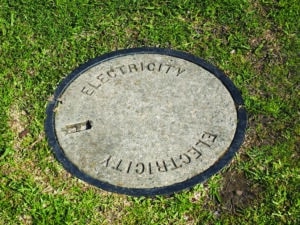
A six-year effort by Sudbury homeowners to delay a transmission line underneath a bike path and former rail line illustrates the obstacles to building out the state’s power grid to cope with climate change. iStock photo
NIMBY local pols and naysayers wrecked the housing market in Massachusetts, leaving us with some of the highest rents and sale prices in the country.
Now the NIMBYs are threatening to do the same thing with the state’s new clean energy industry, blocking or dragging out for years desperately needed new transmission lines, substations and other electrical infrastructure.
And the big question is whether Gov. Maura Healey and key legislative leaders can find a way to stop history from repeating itself and prevent opponents of new energy infrastructure from abusing well-intentioned local, state and federal reviews to delay projects into oblivion.
To that end, a panel commissioned by the Healey administration recently unveiled a series of recommendations aimed at ensuring that opponents of transmission lines aren’t able to game the system and bog vital energy projects down in a morass of bureaucratic appeals and reviews.
Healey Pitches Changes
The recommendations by the group of state lawmakers, union leaders, local officials and environmental advocates, in turn, are likely to find their way into a sweeping new energy bill taking shape at the State House.
Topping the list is a proposal to combine separate and cumbersome state, local and regional regulatory reviews of major transmission projects into a single process, with a deadline of 15 months or less to issue a decision.
That would be a huge improvement over where things stand now, with plans for new power lines, solar farms – you name it – taking anywhere from three to 10 years to work their way through myriad of local, state, regional and federal approvals required just to break ground.
The various permits and reviews are typically conducted sequentially, one after another. That means that it could take two or three years just to get from one stage of the process to another. Opponents can drag the process out with all sorts of regulatory appeals and through the court system as well, further adding to the timeline.
Six Years for 9 Miles of Wire
A classic example of NIMBY obstructionism can be found in Sudbury.
A group of affluent homeowners, rallying under the banner of Protect Sudbury, managed to drag out the permitting for a planned 9-mile transmission line for years.
Eversource first proposed the project, needed to strengthen the electric grid as it prepares to take on ever heavier loads in the push towards decarbonization, in 2016.
The utility giant spent six years in permitting purgatory until it was finally able to break ground in 2022 on the project, which involved laying the electric cable underneath a defunct rail line.
By that point opponents, who had the deep pockets to hire legal help and convinced Sudbury to spend hundreds of thousands of dollars on its own efforts, had exhausted all their appeals.
Protect Sudbury raised all sorts of ridiculous claims – rejected by agencies and courts alike – that the underground power line posed some sort of risk to public health and to the environment as well.
The effort to defeat the power line, in turn, appeared at least in part motivated by opposition to the rail trail planned to go on top of the buried cable.
Sadly, rail trails, and the parents with strollers, people on bikes, runners, seniors and other members of the great unwashed that they attract, have been a particular target of NIMBY homeowners.
The Future’s at Stake
Of course, the suburbs don’t hold a monopoly when it comes to obstructionism, with a number of fights over plans for new transmission lines and substations in urban areas as well.
Plans are in place to ramp up the generation of electricity from clean sources like solar farms and offshore wind. In addition, the overall volume of power generated will also have to grow to accommodate an increasingly electrically-driven lifestyle, from home heat pumps to electric cars.
The problem is, a lot of the power to feed the new demand we are talking about will be surging through transmission lines and substations built during a different energy era.
So, upgrading the state’s increasingly creaky electric grid is a must if the state is to reach its goal of decarbonizing the energy sector over the next couple of decades to help save us all from climate change.
But that’s not going to happen if every substation and transmission line becomes an epic permitting battle, chewing up not just countless dollars, but precious time as well.
Now it’s up to the state legislature to do the right thing.
And with the Senate and House chairs of the energy committee having served on the Healey administration’s panel, there are reasonable hopes that siting reform might actually get passed this year.
Stay tuned.
Scott Van Voorhis is Banker & Tradesman’s columnist and publisher of the Contrarian Boston newsletter; opinions expressed are his own. He may be reached at sbvanvoorhis@hotmail.com.





